Product information
- TOP
- Business
- Life Science
- Products for eye care
Products for eye care
Materials for Contact Lens
Soft contact lenses with MPC have high biocompatibility. The U.S. Food and Drug Administration (FDA) approved the lenses for those who feel discomfort from dryness after using conventional contact lenses.
LIPIDURE® is also used for its packaging solution (packing solution) and provides excellent drought-resistance, antifouling property, and prevention of bacterial adhesion.
Drought resistance of soft contact lenses packed in LIPIDURE® solution
LIPIDURE® packing solution suppresses the deformation of soft contact lenses that are dry.
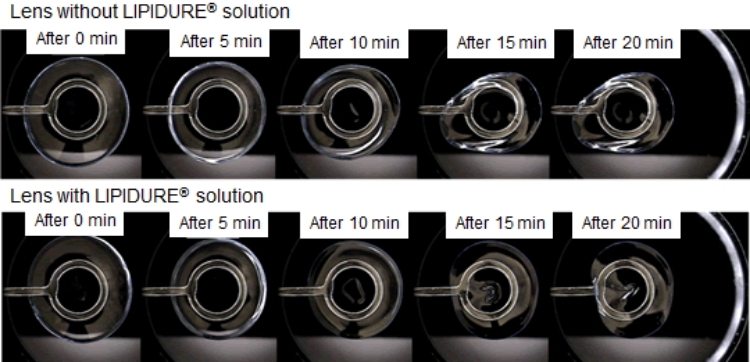
The top figure above shows the deformation of a soft contact lens placed on a circular ring. There was no significant difference in the lenses after 0 and 5 minutes, but the lens without LIPIDURE® solution was largely deformed after 15 minutes. The lens with LIPIDURE® solution started to deform after 15 minutes and was deformed after 20 minutes.
Antifouling property (lipid stains) of soft contact lenses packed in LIPIDURE® solution
LIPIDURE® packing solution suppresses lipid stains on soft contact lenses.
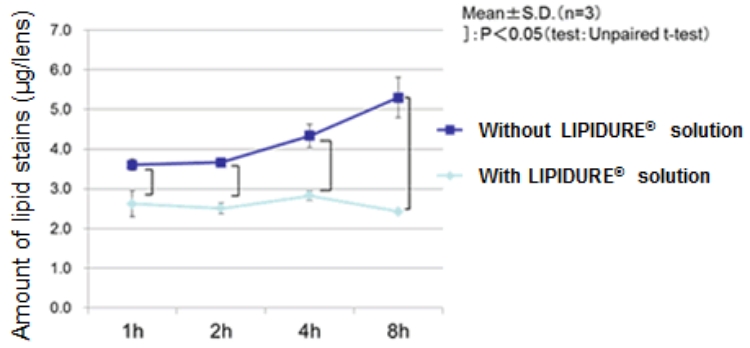
Prevention of bacterial adhesion of soft contact lenses packed in LIPIDURE® solution
LIPIDURE® packing solution suppresses bacterial adhesion to soft contact lenses.
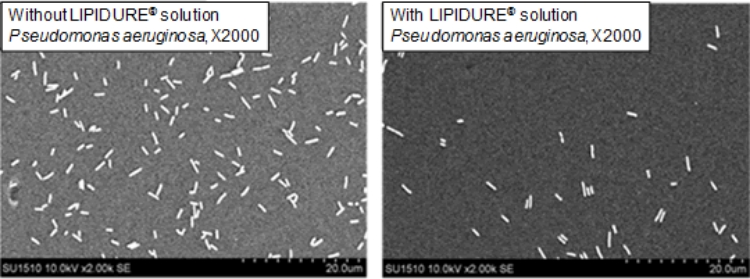
Materials for Eye Drop
LIPIDURE® has high hydrophilicity as well as tear film stabilizing effect.
LIPIDURE® can also alleviate irritation from preservatives contained in eye drops.
Tear film stabilizing effect of LIPIDURE® eye drop
LIPIDURE® eye drop prolongs tear break-up time (BUT) and stabilizes tear film.
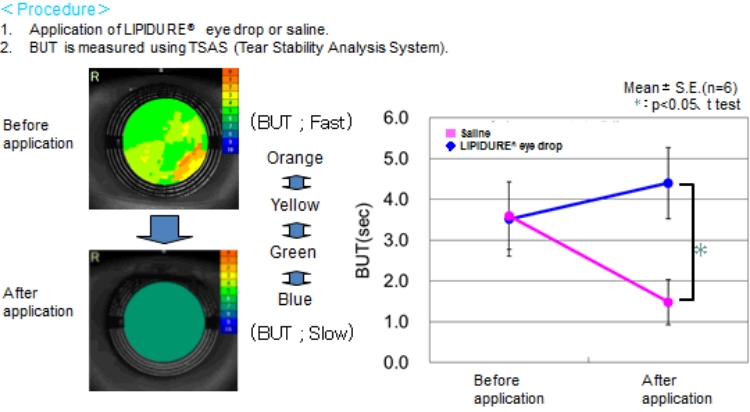
The figure above shows a visual representation of BUT using TSAS (Tear stability Analysis System).
If tear dries right after blinking, the color turns orange or yellow; if it takes longer to dry, the color turns green.
Safety of LIPIDURE® eye drop
LIPIDURE® eye drop can protect corneal cells and is very safe.
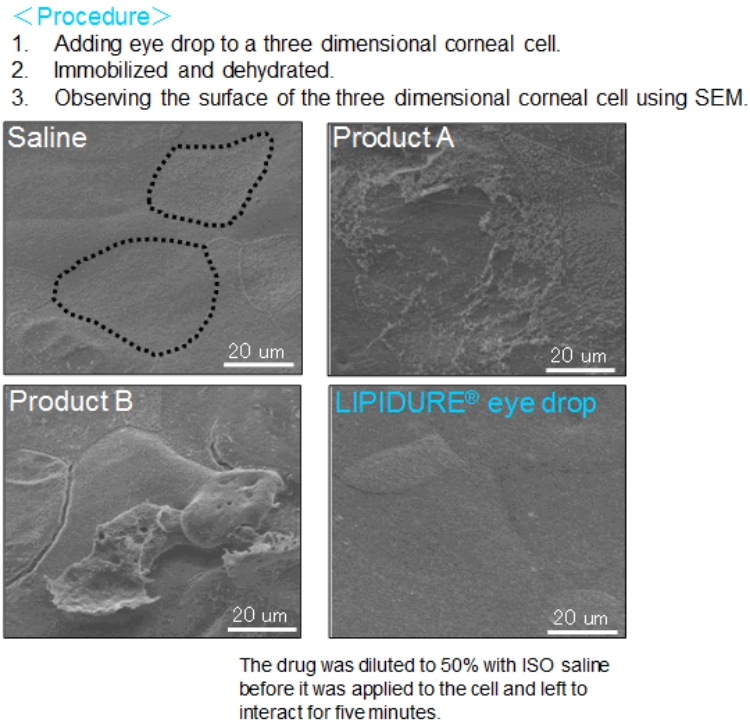
The image is the scanning electron microscope (SEM) result of a three dimensional corneal cell model. The corneal cell remained intact after applying saline and LIPIDURE® eye drop.
The surface of the corneal cell was irritated after treatment in product A, while there was damage to the surface of the corneal cell and the cell was separated in product B.
Conference presentation and reference
Sakurai, S., Shimamura, Y., Miyamoto, K., and Yamamoto, N. (2015). 58th general meeting of Japan Contact Lens Society, Osaka.
Ando-Kobarashi, R., Tsuchida, M., Inomata, K., Miyazaki, T., Kudo M., and Kurosawa, H. (2010). Journal of Japan Contact Lens Society: volume 52, 265-269.
Takada, Y., Sakurai, S., Miyamoto, K., Sakamoto, N., Miyazaki, T., and Yamada, M. (2014). Journal of the Eye, 31 (3), 409-413.

